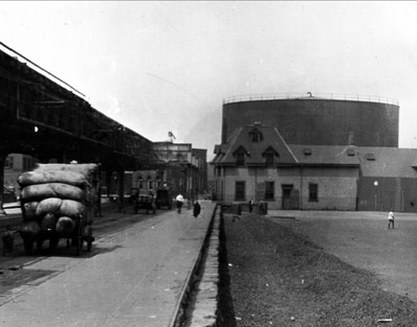Molasses: sticky, sweet, deadly? 英会話・英語 アミック
2019/01/15
Molasses is a sweet, syrupy product that is created by refining sugar cane. Have you ever heard the simile “slow as molasses in January” to describe someone or something slow-moving? Molasses and similar products (think honey or maple syrup) at room temperature move quite slowly. However, today is the 100th anniversary of a day when molasses didn’t move so slowly; in fact, the sticky goop caused the deaths of 21 people living in Boston, Massachusetts. I’m talking, of course, about the Great Molasses Flood of 1919.
On January 15, 1919, a large tank that stored molasses burst flooding the streets of Boston. The weather had gotten slightly warmer which increased the temperature of the molasses and started a fermentation process. Additionally, the construction of the storage tank had neglected safety testing, such as filling it with water to check for leaks. The storage tank leaked so badly that the company painted it brown to hide the leaks. Nearby residents often scraped the leaking molasses from the tank for personal use. The fermenting gases along with lackadaisical safety testing caused the storage unit to explode sending a wave of molasses up to 25 feet high at some points and causing 2 to 3 feet in flooding. It’s estimated that the molasses flowed at a speed of 56 kilometers per hour which quickly cooled and harden causing great difficulty to free oneself from it’s sticky embrace.
Clean up efforts were a nightmare, with 300 to 400 volunteers using salt water and sand to wash away or absorb the brown goop. Public transportation, handrails, doors and floors were sticky for long afterwards as cleaners tracked molasses with their shoes where ever they went.
So, the next time you want to eat some gingerbread cookies or enjoy some pancakes, pray your molasses doesn’t become murderous.

The offending molasses storage tank in an undated picture. Watch out!












